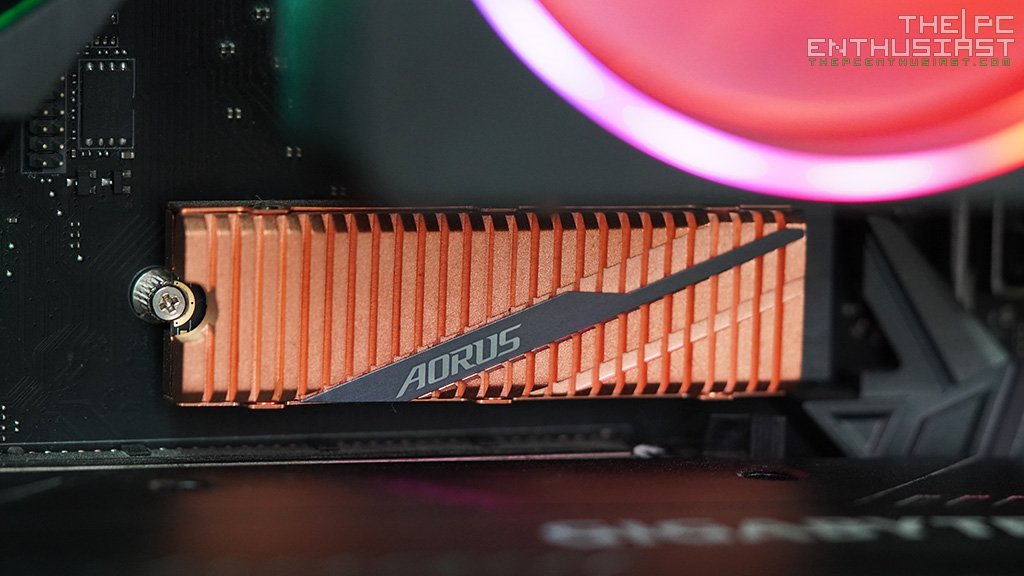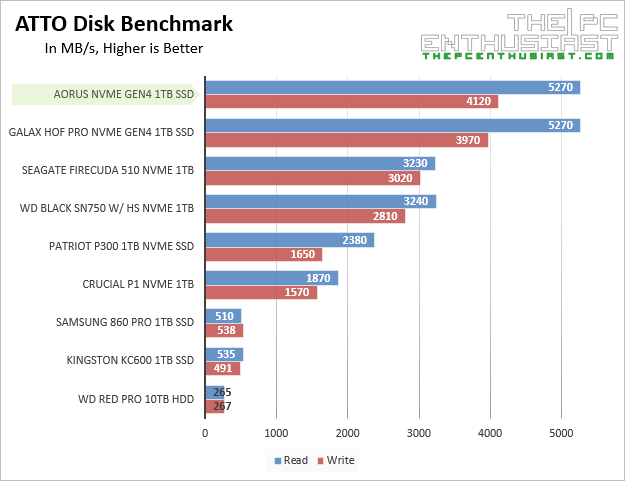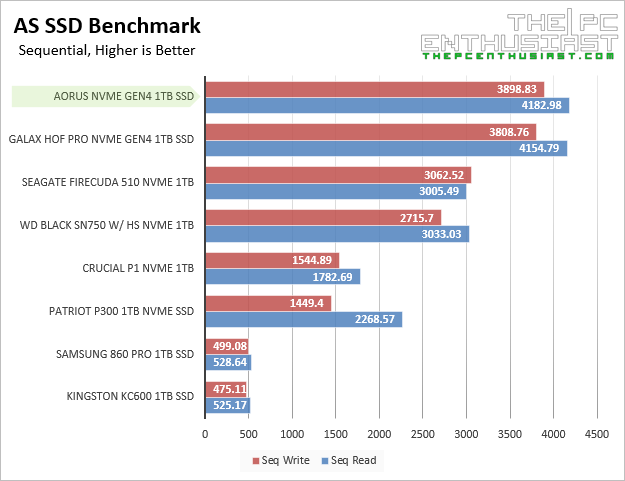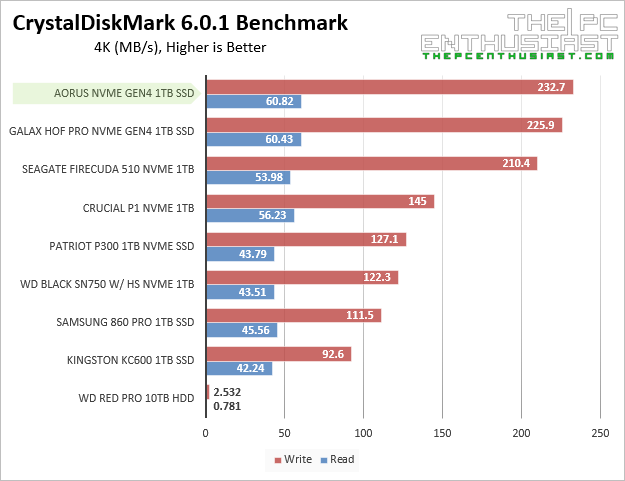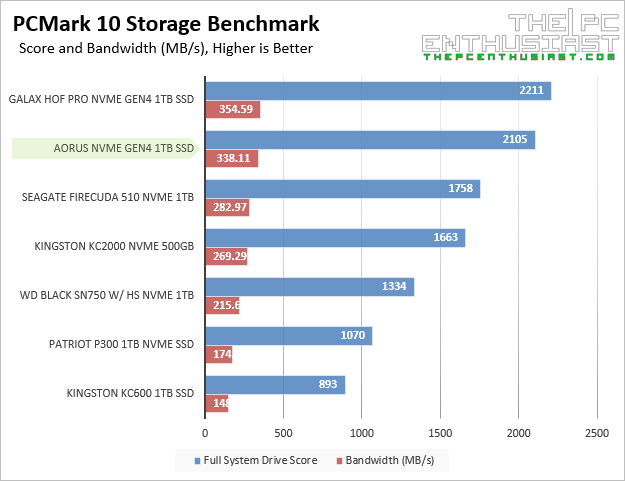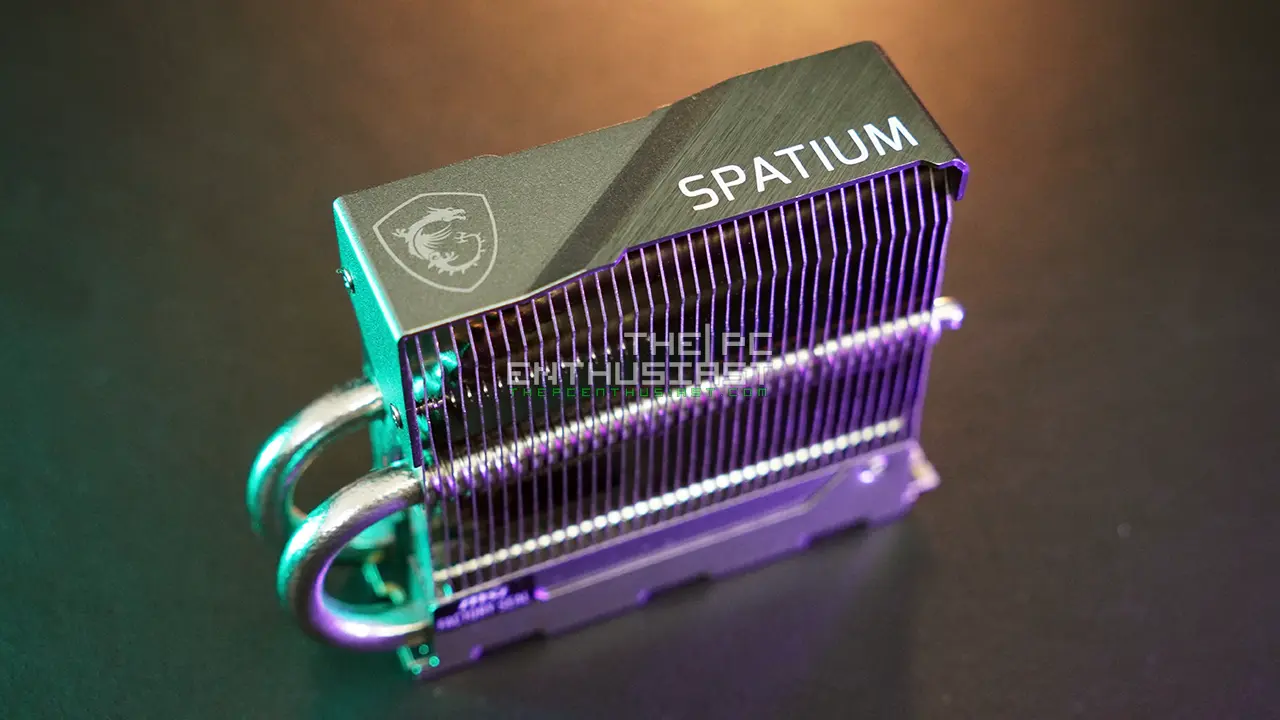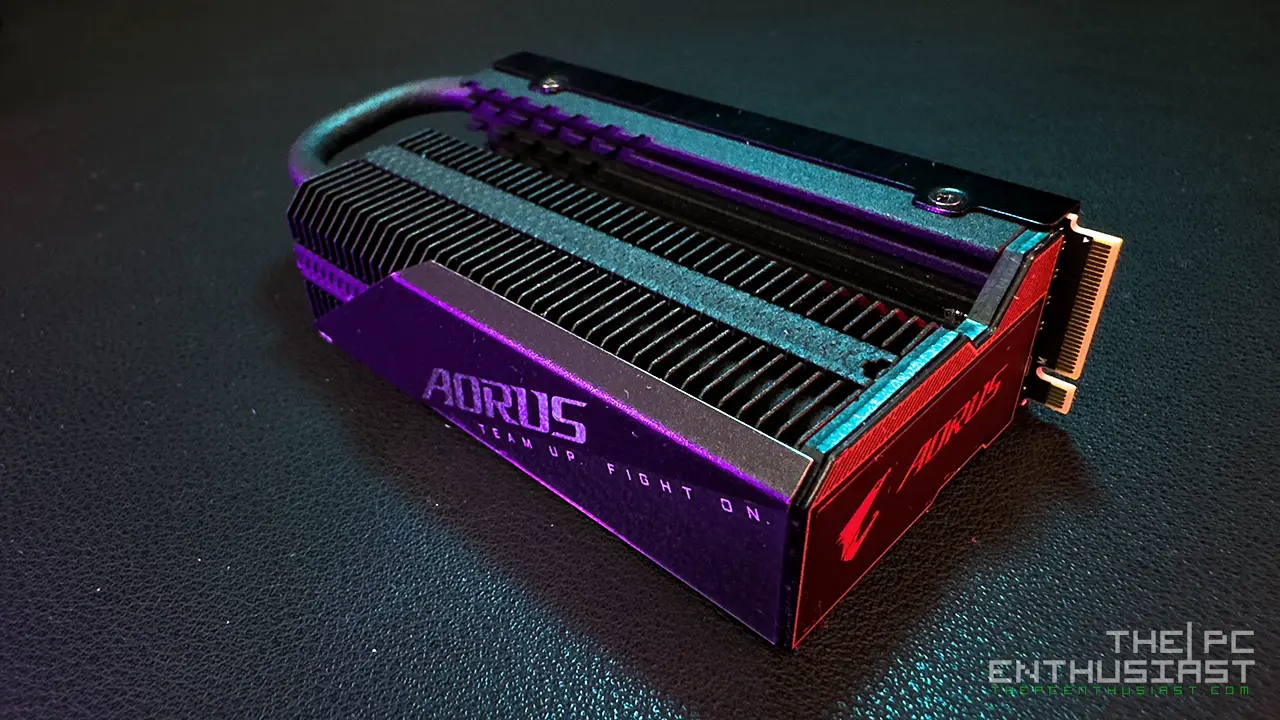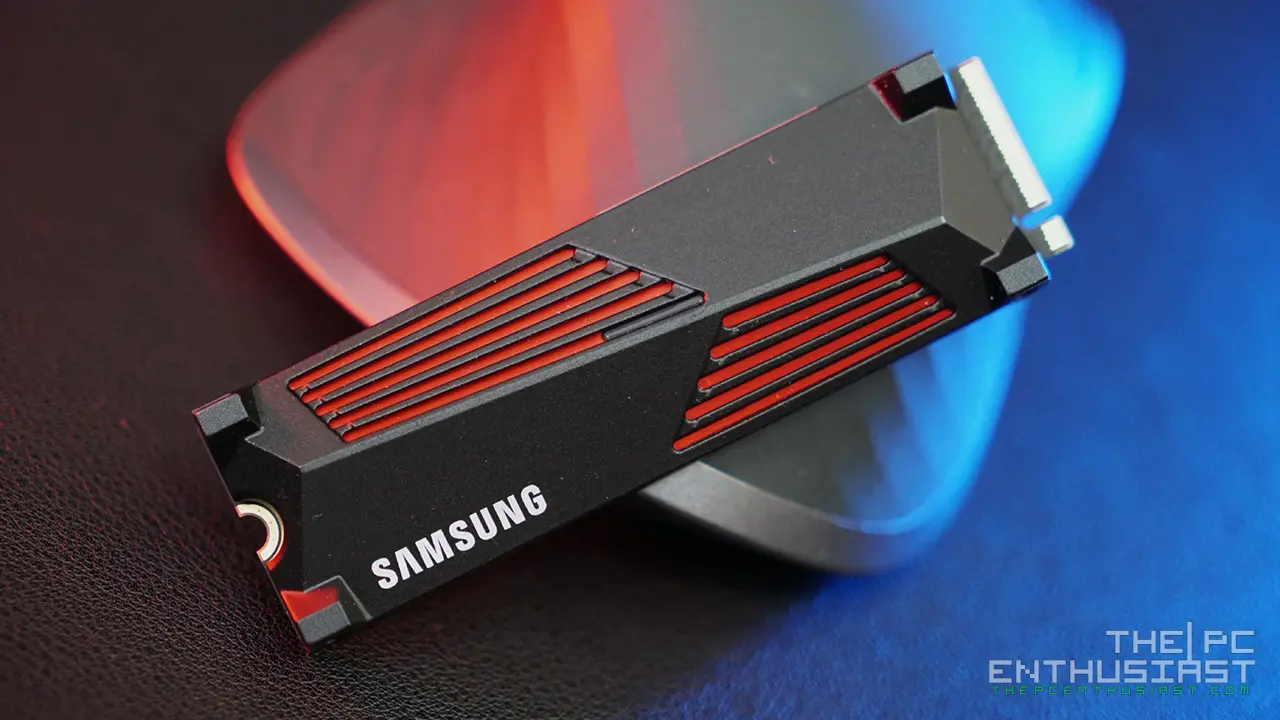We are checking out several M.2 PCIe 4.0 NVMe SSDs; and today we have the Aorus NVME Gen4 SSD 1TB capacity to play with. This is one of the most eye-catching M.2 drive we have tested and it looks premium thanks to its solid dual-sided copper heatsink. Aesthetically speaking, I’m already giving it a passing score; but what about its performance? Well, let’s see how fast the Aorus NVME Gen4 SSD can go. If you have an X570 motherboard powered by a 3rd Gen Ryzen CPU and you want a storage drive that could take advantage of the PCIe Gen 4 interface, then please continue reading our Aorus NVME Gen4 1TB SSD review below.
Gigabyte Aorus NVME Gen4 SSD 1TB Capacity Review
The Aorus NVME Gen4 SSD is the Gigabyte’s fastest M.2 storage drive to date. They do have an Aorus Gen4 AIC SSD but that’s a different type of product for a different type of application. First thing though, I am not a fan of their naming scheme. “Aorus” is the brand, while “NVMe” and “Gen4” are basically very common (technical) terms. I think the product name is too plain or uninspiring considering the looks and performance of this product. Well, that’s just me nitpicking.
Moving on, the Aorus NVMe Gen4 SSD features Phison PS5016-E16 controller based on a 28nm manufacturing technology. At this time, I think all of the Gen4 NVME SSDs are using the same controller. The PS5016-E16 features eight NAND channels with 32 CE targets, DDR4 DRAM caching, and a PCIe 4.0×4 interface. It also has the enough compute power for ECC processing when adopting the latest 3D TLC NAND flash.
Speaking of NAND flash, the Aorus NVME Gen4 SSD features Toshiba BiCS4 96 layer 3D TLC with a throughput speed of 800MT/s. The drive also supports NVMe 1.3 protocol, LDPC error correction, wear leveling, over-provision, Pyrite support and that huge copper heat speader to cool down the controller and NAND chips.
Currently, the Aorus NVME Gen4 SSD is available in three capacities: 500GB, 1TB and 2TB. Personally, I would avoid the 500GB capacity since it has a slower sequential write speed of only up to 2,500 MB/s. That’s basically the same write speed as a PCIe 3.0 NVMe SSD. Better get a (cheaper) Gen3 NVMe SSD instead if that is the case.
On the other hand, both the 1TB and 2TB capacities offer a sequential read speed of up to 5,000 MB/s and sequential write speed of up to 4,400 MB/s. The drives also offer up to 750,000 IOPS random read and up to 700,000 IOPS of random write. All three capacities have a 1.77 million hours of mean time between failure rate.
As for pricing, the 500GB comes at an MSRP of $150USD; the 1TB at $260 USD; and the 2TB at $450 USD. Gigabyte is also offering a 5-year limited warranty for the said drives. SSD prices tend to change, so for latest pricing and availability, kindly check them out via the links below.
Aorus NVMe Gen4 SSD 1TB – Amazon.com here or Newegg.com here.
For UK available on Amazon UK here
Aorus NVME Gen4 SSD Specifications
| 2TB | 1TB | 500GB | |
|---|---|---|---|
| Interface | PCI-Express 4.0x4, NVMe 1.3 | ||
| Form Factor | M.2 2280 | ||
| Total Capacity | 2000GB | 1000GB | 500GB |
| Warranty | Limited 5-years or 3600TBW | Limited 5-years or 1800TBW | Limited 5-years or 850TBW |
| NAND | 3D TLC Toshiba BiCS4 | ||
| External DDR Cache | DDR4 2GB | DDR4 1GB | DDR4 512MB |
| Sequential Read speed | Up to 5000 MB/s | Up to 5000 MB/s | |
| Sequential Write speed | Up to 4400 MB/s | Up to 2500 MB/s | |
| Random Read IOPS | up to 750k | Up to 400k | |
| Random Write IOPS | up to 700k | Up to 550k | |
| Dimension | 80.5 x 11.4 x 23.5 mm | ||
| Mean time between failure (MTBF) | 1.77 million hours | ||
| Power Consumption (Active) | Average: R : 6.5W; W : 6.6W | Average: R : 6.6W; W : 6.4W | Average: R : 5.9W; W : 4.5W |
| Power Consumption (Idle) | 21.1mw | 18.8mw | 13.21mW |
| Temperature (Operating) | 0°C to 70°C | ||
| Temperature (Storage) | -40°C to 85°C | ||
Aorus NVME Gen4 SSD Packaging and Closer Look
The Aorus NVME Gen4 SSD comes in a small compact box. Nothing fancy or outlandish; but it is a simple all-black box with the name of Aorus logo at the front and additional information about the product at the back. There is a thick foam padding protecting and cradling the SSD in the middle portion of the box.
The Aorus NVME Gen4 SSD features a dual-sided copper heat spreader. The top portion is thicker compared to the bottom portion, since it may encounter compatibility issues if the bottom portion is thick as well. There are 27 “fins” on the heat spreader and a nice “Aorus” branding across. This looks really nice and premium on hand. But one of my concern with the heat spreader is that it may corrode or discolorate on due time.
Removing the heat spreader is easy; simply unscrew the 6 small screws on the sides of the drive. Gently remove the top heat spreader first and slowly pull/slide the drive from the other side of the heat spreader.
You can see from the Phison PS5016-E16 controller at the top center of the PCB. On top of it is an SKhynix H5AN4G8NBJR DDR4 memory chip. There are two of these SKhynix chip, the other one is underneath it. There are also four Toshiba BiCS4 96-layer 3D TLC NAND TABBG65AWV, each chip is 256GB in capacity for a total of 1TB.
Aorus SSD Tool Box
Gigabyte also offers the Aorus SSD Tool Box; a completely optional utility that let’s you monitor the status of the drive. You can also secure erase the SSD using this utility. I think the tool box is okay, but compared to the other SSD tool box from other manufacturers, Gigabyte’s version is a bit lackluster and is missing on other features.
When it comes to SSD utility, Samsung has the best, if not one of the best, software out there. Again, this is optional and if you don’t want to install it, the Aorus Gen4 SSD will work just fine.
Aorus NVME Gen4 SSD – Test Setup
To take advantage of the Aorus NVME Gen4 SSD’s speed, you will need an X570 system with a 3rd Gen AMD Ryzen CPU. It will still work on PCIe 3.0 interface, but the speed will be reduced to about 50% of its expected speeds. I am using the MSI MEG X570 ACE motherboard powered with an AMD Ryzen 7 3700X CPU. Below are the rest of the system’s specifications:
Operating System: Windows 10 Pro 64bit v.1909
Motherboard: MSI MEG X570 ACE
Processor: AMD Ryzen 7 3700X
CPU Cooler: Wraith Prism Cooler
Memory: Crucial Ballistix Elite 16GB DDR-4000
Graphics card: Gigabyte GeForce RTX 2070 Gaming OC
OS Drive: WD Black SN750 NVMe SSD 1TB
Power Supply: Enermax MaxTytan 1250W 80 PLUS Titanium certified
Real World Copy Test
For real world copy test, I copied a 3DMark ZIP installer file with a size of 6.03GB. It was copied from the WD Black SN750 to the Aorus NVME Gen4 SSD. Despite it’s size, it only took a couple of seconds to copy the whole thing. I think it already reached the maximum read speed of the WD SN750, bottlenecking the copy process and it might have been a bit faster if the file was copied or transferred from another PCIe Gen 4 M.2 NVMe SSD.
AJA Benchmark Result
In AJA system test, we can see that the Aorus NVME Gen4 1TB is faster in both read and write speeds compared to the other M.2 NVMe Gen3-based SSDs in the graphs. However, it somewhat falls short of the write speed. It’s also a bit slower compared to the Galax HOF Pro, also a NVME Gen4 SSD with the same specs and config. I tested this several times, and the results were similar.
ATTO Disk Benchmark Result
ATTO disk benchmark usually reflects the advertised speed of a storage drive. Here we can see that the read speed of the Aorus NVME Gen4 SSD 1TB is around 5.2 GB/s, a bit higher from the advertised 5GBs sequential read speed. Meanwhile the write speed is around 4.1 GB/s, which is just 200MB/s short of the advertised speeds. Those numbers are still impressive as they are very near the advertised speeds. We can also see that both the Aorus and Galax are performing similarly in this test.
AS SSD Benchmark Results
In AS SSD benchmark results, the Aorus NVMe Gen4 SSD takes the lead in the sequential test, right beside the Galax HOF Pro NVMe Gen4 SSD. However, the performance significantly drops during the 4K tests. This was really a head scratcher for me since I tested it several times and the results were about the same. Not sure why the write speed was performing poorly in this test.
CrystalDiskMark Benchmark Results
In CrystalDiskMark benchmarks, we can see that the Aorus NVME Gen4 SSD is performing as expected both in sequential and 4K tests.
ezIOmeter Benchmark Results
In ezIOmeter, the Aorus NVME Gen4 SSD 1TB was on top of the charts, well at least for the 4KB random test. Read speed was as expected during the 128KB sequential test. But for some reason that is unknown to me, the sequential write speed was significantly slower. The Galax was performing just fine in this test, so I’m not sure why it was slow.
This is actually similar to what I have experienced with the Seagate FireCuda 520 Gen4 SSD. Perhaps these benchmark tools, like the Anvil Storage, are very old and some of its testing methodology may be obsolete or no longer suited for the latest PCIe Gen 4 SSD drives.
PCMark 8 Storage Benchmark Results
Let’s use a more modern benchmark utility for the last two tests; the PCMark 8 storage benchmark and PCMark 10 full system drive benchmark. PCMark’s storage benchmark tests the performance of SSDs, HDDs and hybrid drives with traces recorded from Adobe Creative Suite, Microsoft Office and a selection of popular games. It also highlights real-world performance differences between storage devices unlike synthetic storage tests.
I’m a bit surprised to see that there is very little difference in the overall storage score between the Gen4 and Gen3 NVME SSD drives. There is a difference in the storage bandwidth though, and as expected the Gen4 drives are faster than the Gen3 SSDs.
Note that PCMark 8 is no longer being updated since PCMark 10 was released.
PCMark 10 Full System Drive Benchmark Results
The PCMark 10 full system drive benchmark uses a wide-ranging set of real-world traces from popular applications and common tasks to fully test the performance of the fastest modern drives, including PCIe 4.0 NVMe storage devices and new technologies like Intel’s Optane. This will give us a more realistic expectation of a drive’s performance and a closer to real-world testing scenario.
In PCMark 10, the Aorus NVMe Gen4 SSD 1TB capacity scored fairly high, but not high enough to beat the Galax HOF Pro NVMe Gen4 SSD. Interestingly, these drives are basically similar, using the same Phison controller and design.
This means that in real world use, they should perform very similar. Perhaps, there’s just a scenario where one drive would be faster than the other and vice versa.
Aorus NVME Gen4 SSD 1TB Review Conclusion
The Aorus NVME Gen4 SSD offers fast read / write speeds, especially for those who are wanting more speed beyond what a PCIe 3.0 SSD offers. On paper it offers sequential read speed of up to 5,000 MB/s and sequential write speed of up to 4,400 MB/s. And based on our tests, the 1TB capacity somehow manages to reach those advertised speeds.
Those speeds may be a bit overkill for gaming purposes or for “normal” desktop operation. Honestly, you won’t be able to tell the difference whether you are running a PCIe 3.0 or PCIe 4.0 NVMe SSD. But will you will notice it when it comes to copying, writing, or exporting large file sizes.
So, content creators or people who usually handles large file sizes (video and images), they would be able to take advantage of the speed. But that doesn’t mean you can’t use them for gaming or as an OS drive. You can do that; in fact, I’m currently using this drive for my Steam games. I know some enthusiasts would want a good-looking drive like this, even though the performance is a bit overkill for their daily needs.
Most NVME Gen4 SSDs in the market are basically made with the same components in them. These Gen4 drives feature the same Phison PS5016-E16 controller and Toshiba BiCS4 3D TLC NAND chips. So, I wouldn’t be surprised if performance is similar at all. However, since they are basically made with the same components, it is up to the manufacturer to make their product stand out from the rest.
Aorus has done a great job with the double-sided heat spreader. I think it is dual purpose; first is to keep the controller’s temperature at bay, and second is to make the drive aesthetically look pleasing and unique. There are no RGB lighting on this drive, unlike its predecessor the Aorus RGB M.2 NVMe SSD. And I think it’s good that Gigabyte didn’t put any (RGB) lighting at all. The huge copper heat spreader is already a head turner.
Currently, the only down side I can see with the Aorus NVME Gen4 SSD is that it is priced a bit higher compared to the competition. Well, the SSD does look great and I expected the company would put a bit of the premium price for that.
One thing to note though is you can’t install this drive on a laptop since the heat spreader would prevent you from closing the lid. If the motherboard has a heat spreader for the M.2 drive, you can simply remove the heat spreader; unless the heat spreader is somewhat built in. You can remove the heat spreader on the Aorus NVMe Gen4 SSD, but it would defeat the purposes on getting this drive. You paid for that heat spreader in the first place.
It is best to install the drive right below the CPU socket where you can flaunt the drive or somewhere that it won’t be obstructed by another component. Another thing is that I do not recommend that you get the 500GB since it only has a write speed of 2,500MB/s. That’s speed is achievable by a good PCIe 3.0 NVMe SSD.
By the way, you do need a 3rd Gen AMD Ryzen CPU and an X570 motherboard with PCIe 4.0 support to fully take advantage of its speed. PCIe 4.0 is currently only available in X570 motherboards, so for Intel users, you will have to wait for Intel to release a new chipset or system that would support the latest PCIe 4.0 interface. It will work on a PCIe 3.0 interface, but the speeds will be significantly slower.
So, if you are in the market looking for not only a fast PCIE 4.0 M.2 drive but also a great-looking drive, I don’t have any problem recommending the Aorus NVME Gen4 SSD 1TB or 2TB drive.
Aorus NVME Gen4 SSD 1TB latest pricing and availability:
For US: Available on Amazon.com here or Newegg.com here
For UK: Available on Amazon UK here

